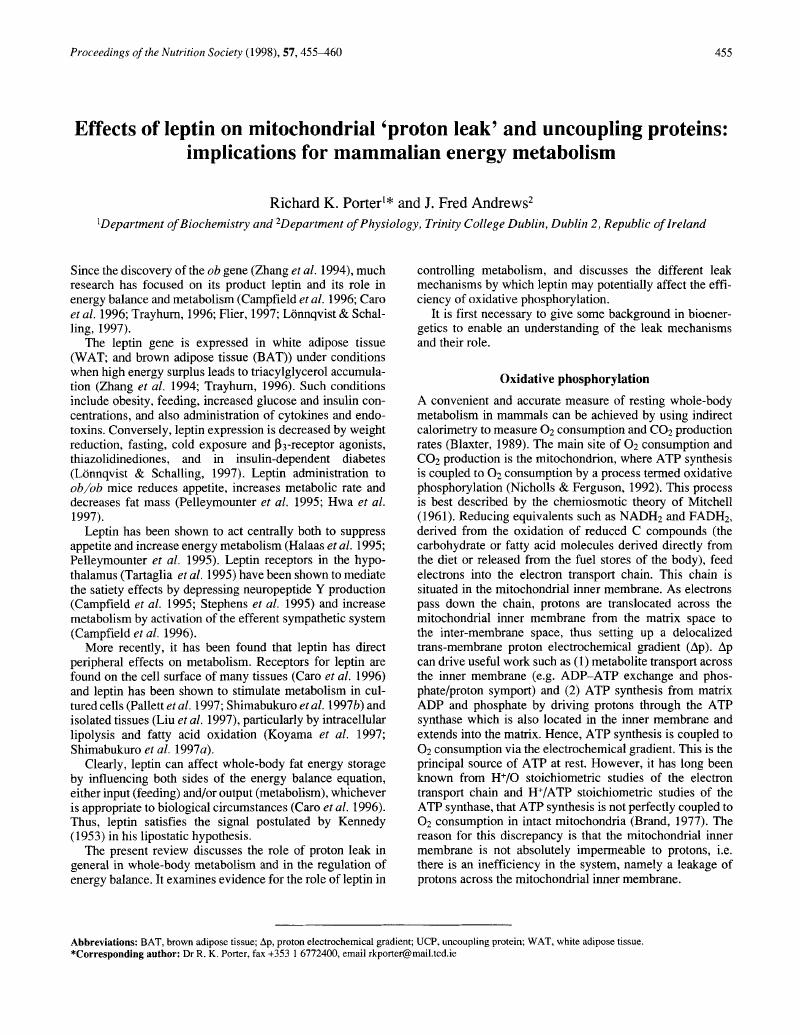Crossref Citations
This article has been cited by the following publications. This list is generated based on data provided by Crossref.
Andrews, J. F.
1998.
Leptin: energy regulation and beyond to a hormone with pan-physiological function.
Proceedings of the Nutrition Society,
Vol. 57,
Issue. 3,
p.
409.
Melia, H.P.
Andrews, J.F.
McBennett, S.M.
and
Porter, R.K.
1999.
Effects of acute leptin administration on the differences in proton leak rate in liver mitochondria fromob/obmice compared to lean controls.
FEBS Letters,
Vol. 458,
Issue. 2,
p.
261.
Polito, Angela
Fabbri, Andrea
Ferro-Luzzi, Anna
Cuzzolaro, Massimo
Censi, Laura
Ciarapica, Donatella
Fabbrini, Elisa
and
Giannini, Debora
2000.
Basal metabolic rate in anorexia nervosa: relation to body composition and leptin concentrations.
The American Journal of Clinical Nutrition,
Vol. 71,
Issue. 6,
p.
1495.
Kurpad, AV
Muthayya, S
and
Vaz, M
2005.
Consequences of inadequate food energy and negative energy balance in humans.
Public Health Nutrition,
Vol. 8,
Issue. 7a,
p.
1053.
Müller, M J
Bosy-Westphal, A
Later, W
Haas, V
and
Heller, M
2009.
Functional body composition: insights into the regulation of energy metabolism and some clinical applications.
European Journal of Clinical Nutrition,
Vol. 63,
Issue. 9,
p.
1045.
Brown, Jason C.L.
and
Staples, James F.
2010.
Mitochondrial metabolism during fasting-induced daily torpor in mice.
Biochimica et Biophysica Acta (BBA) - Bioenergetics,
Vol. 1797,
Issue. 4,
p.
476.
Pathak, Ravi Ramesh
Grover, Aditya
Malaney, Prerna
Quarni, Waise
Pandit, Ashish
Allen-Gipson, Diane
and
Davé, Vrushank
2013.
Loss of Phosphatase and Tensin Homolog (PTEN) Induces Leptin-mediated Leptin Gene Expression.
Journal of Biological Chemistry,
Vol. 288,
Issue. 41,
p.
29821.
Bond, David J.
da Silveira, Leonardo Evangelista
MacMillan, Erin L.
Torres, Ivan J.
Lang, Donna J.
Su, Wayne
Honer, William G.
Lam, Raymond W.
and
Yatham, Lakshmi N.
2016.
Relationship between body mass index and hippocampal
glutamate/glutamine in bipolar disorder.
British Journal of Psychiatry,
Vol. 208,
Issue. 2,
p.
146.





